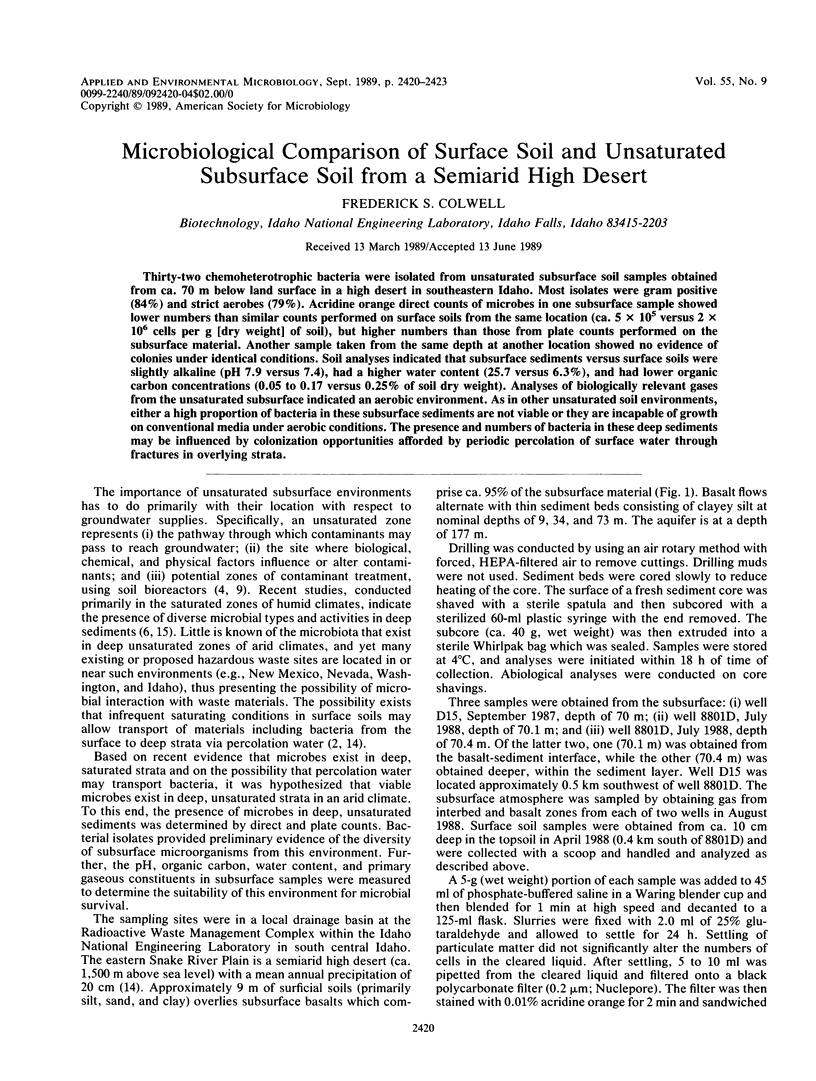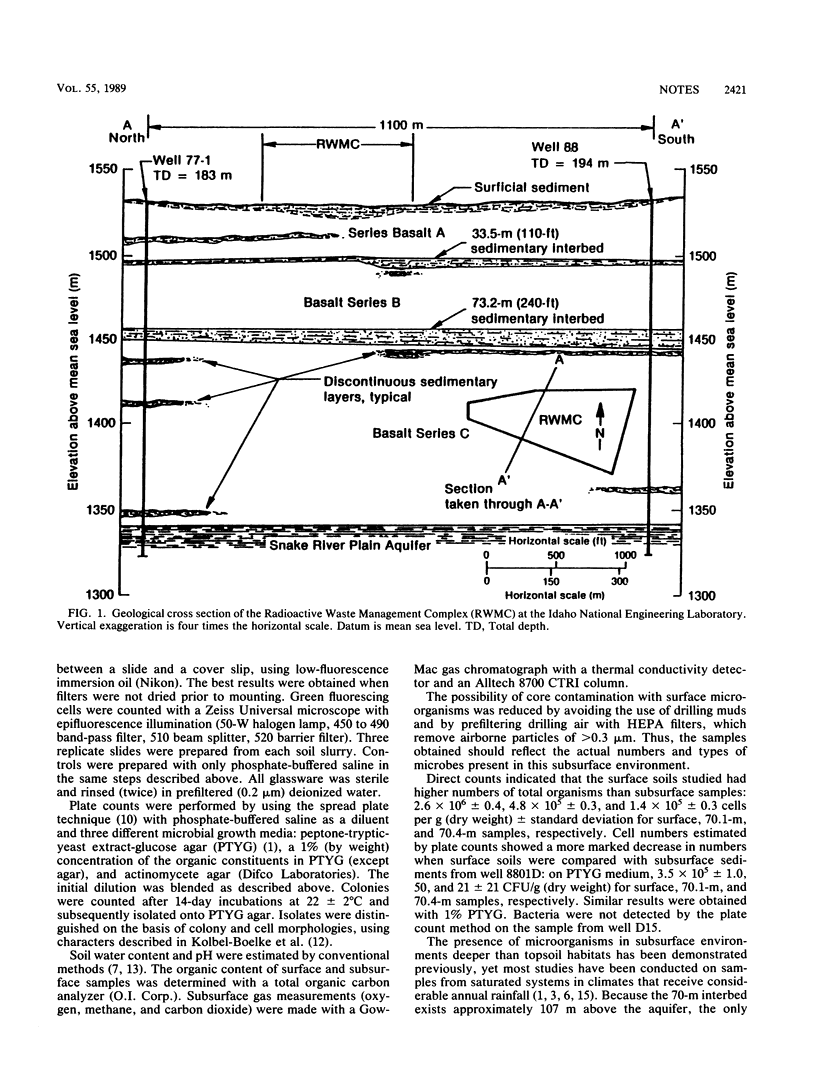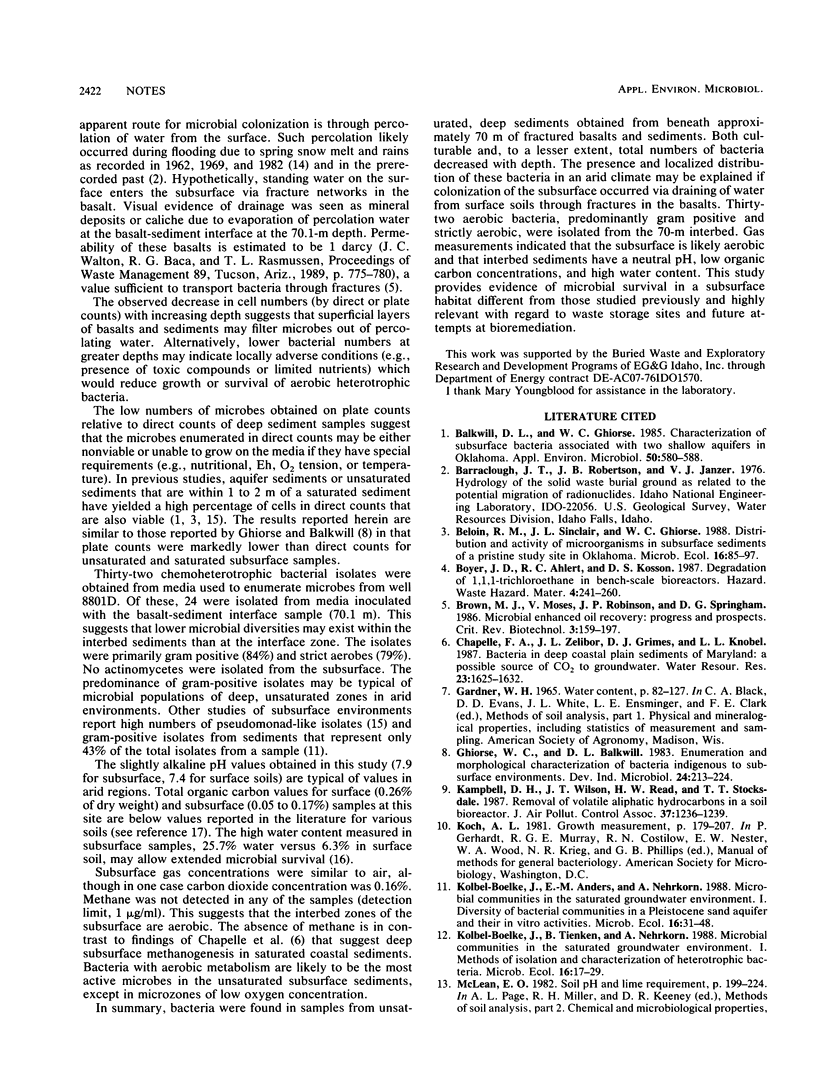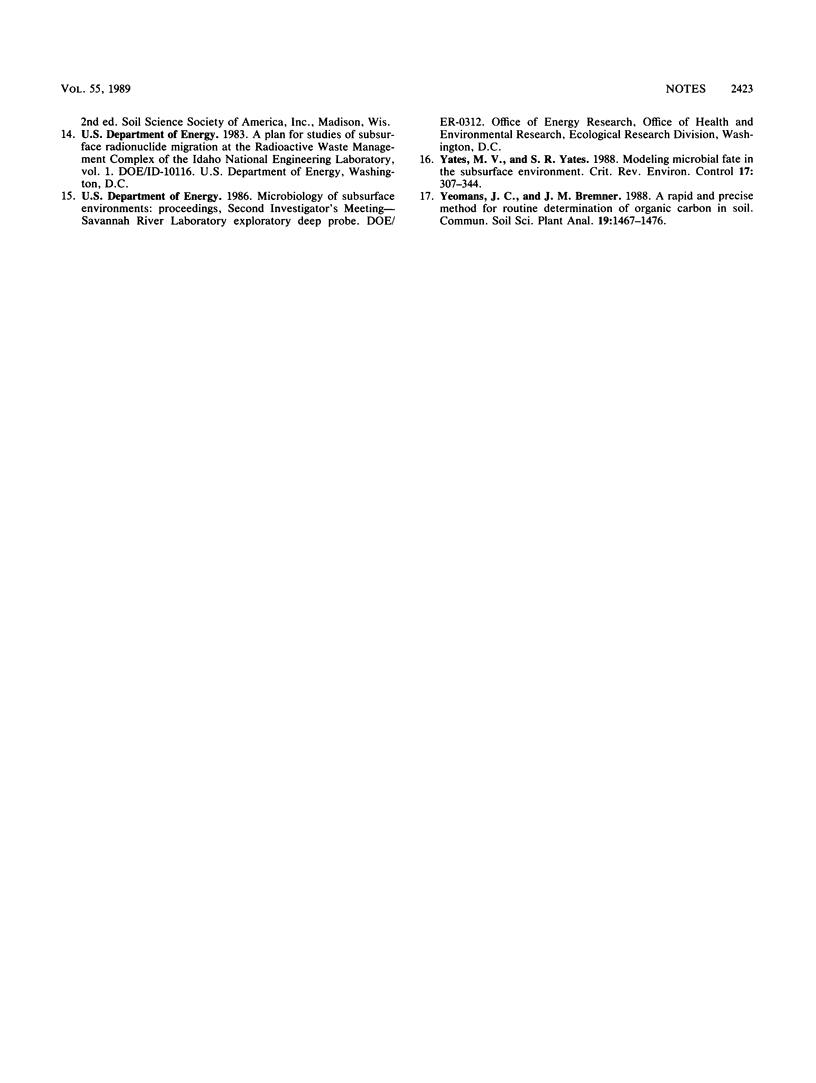Abstract
Thirty-two chemoheterotrophic bacteria were isolated from unsaturated subsurface soil samples obtained from ca. 70 m below land surface in a high desert in southeastern Idaho. Most isolates were gram positive (84%) and strict aerobes (79%). Acridine orange direct counts of microbes in one subsurface sample showed lower numbers than similar counts performed on surface soils from the same location (ca. 5 × 105 versus 2 × 106 cells per g [dry weight] of soil), but higher numbers than those from plate counts performed on the subsurface material. Another sample taken from the same depth at another location showed no evidence of colonies under identical conditions. Soil analyses indicated that subsurface sediments versus surface soils were slightly alkaline (pH 7.9 versus 7.4), had a higher water content (25.7 versus 6.3%), and had lower organic carbon concentrations (0.05 to 0.17 versus 0.25% of soil dry weight). Analyses of biologically relevant gases from the unsaturated subsurface indicated an aerobic environment. As in other unsaturated soil environments, either a high proportion of bacteria in these subsurface sediments are not viable or they are incapable of growth on conventional media under aerobic conditions. The presence and numbers of bacteria in these deep sediments may be influenced by colonization opportunities afforded by periodic percolation of surface water through fractures in overlying strata.
Full text
PDF



Selected References
These references are in PubMed. This may not be the complete list of references from this article.
- Balkwill D. L., Ghiorse W. C. Characterization of subsurface bacteria associated with two shallow aquifers in oklahoma. Appl Environ Microbiol. 1985 Sep;50(3):580–588. doi: 10.1128/aem.50.3.580-588.1985. [DOI] [PMC free article] [PubMed] [Google Scholar]


